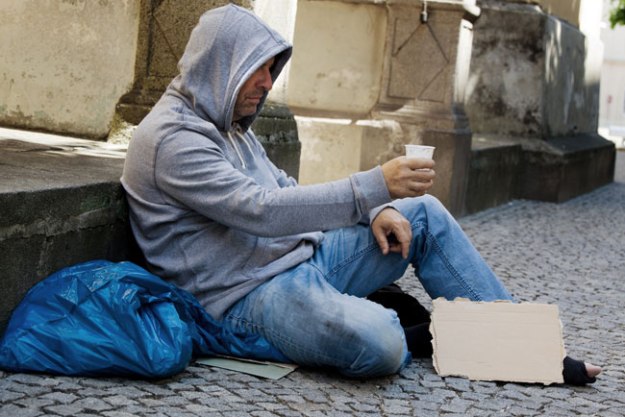Each culture has its own customs and language. We identify them by their dress, music, food, and rituals. The homeless mentally ill are no exception. They wear a variety of costumes–multiple coats, ragged jeans, shoes run down at the heel, funny hats. They tote a series of bags or push shopping carts. Some mutter, some yell expletives, some discourse endlessly on physics. But we don’t usually take the time to look closely or listen to them because we don’t want to know this particular diverse group.
I sit in my car outside a youth hostel at 6th and Minna Streets in San Francisco watching an assortment of homeless people, crack addicts, and prostitutes make their way down the street. A white man dressed in khaki Bermuda shorts and a sleeveless undershirt pushes his shopping cart with what I assume to be his worldly belongings across 6th street with great gusto. He averts his eyes from those who linger on the corner, looking aimless and lost. An African-American woman in a torn flowered housedress walks back and forth in front of my parked car muttering to herself.
Estimates range widely as to what percentage of homeless people in the United States suffer from mental disorders but they are part of a diverse group we don’t think of when we think of diversity. We include ethnicity, race, class, sexual orientation, age physical illness, and gender when we discuss diversity, but we don’t usually take into account those who think differently, those who live in the terror that misfiring neurons inflict. We stigmatize them because they don’t fit the expectations of our success-oriented society. Our society is bipolar: you either fit in it or you are on the street. And if you don’t fit, it is your fault.
A person with a mental illness did not choose to have a brain disease. It is a biochemical disorder. There is so much fear and ignorance about mental illness that we think that the person who is mumbling in the middle of the street or sleeping in the doorway wants to live life that way. Or is too lazy to get a job; or did something so awful he deserves to suffer; or is “just an addict.”
Those who suffer from mental illness used to be hospitalized. Now they can only be legally held for “treatment” for 72 hours unless they are determined to be a “danger to themselves or to others.” It doesn’t matter that they may have no place to go when they are discharged, no one to monitor their medication, or that they are still unstable and confused.
Mental illness is a diversity issue. We have stigmatized, shunned, and excluded those who suffer from mental disorders just as we have done to other groups we considered to be “different,” such as non-white racial groups and homosexuals. Mental illness is the last frontier to be explored and normalized. It is time to find ways to include those who suffer from a brain disorder in our society. Compassion and human dignity demands it.

2 Comments on “The Last Frontier: Mental Illness as an Issue of Diversity”
I just like the valuable information you provide in your articles.
I will bookmark your weblog and check again right here regularly.
I’m quite sure I will be told many new stuff proper right
here! Best of luck for the next!
Thank you for taking the time to let me know that your find the info valuable to you. I hope you will read the Archived posts.
Best,
Maureen